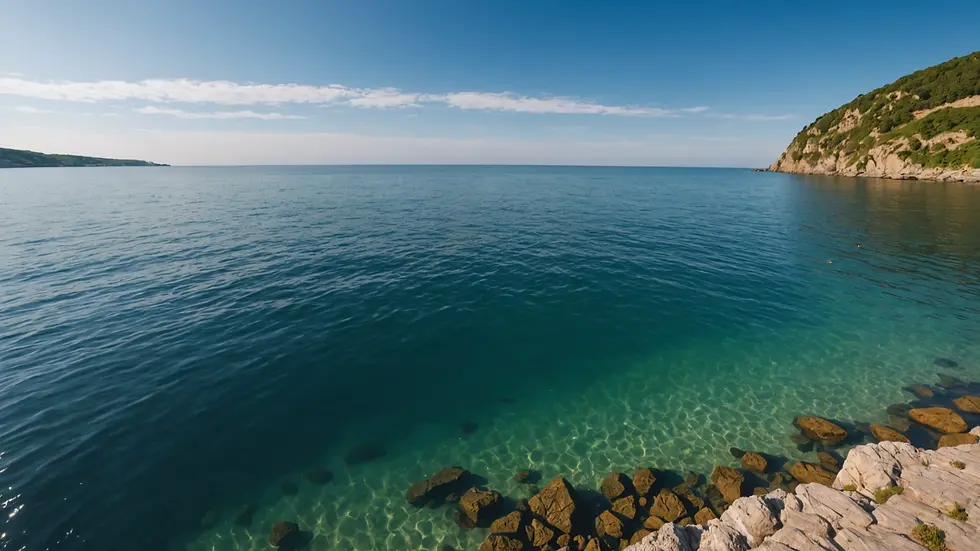How Does Autonomic Conflict Affect the Cardiovascular System During Cold Sea Swimming?
- Pammy Gaskin
- Feb 7
- 4 min read
Cold sea swimming has surged in popularity, with advocates praising its various health benefits. From boosting mood to enhancing immune function, many flock to icy waters for a refreshing dip. However, jumping into cold water comes with challenges for the cardiovascular system, primarily driven by a phenomenon known as autonomic conflict.
This article explores the concept of autonomic conflict, its relevance during cold sea swimming, and its effects on cardiovascular health.
Understanding Autonomic Conflict
Autonomic conflict occurs when the sympathetic and parasympathetic branches of the autonomic nervous system (ANS) compete for activation. The sympathetic system triggers the body's "fight or flight" response, rapidly increasing heart rate and blood pressure to prepare for action. Meanwhile, the parasympathetic system encourages a "rest and digest" mode, promoting relaxation and a slower heart rate.
Under everyday conditions, these systems work together seamlessly to maintain balance. However, when both systems activate simultaneously, the result can be physiological confusion, leading to heightened stress and discomfort. This conflict is particularly notable during physical challenges or extreme conditions, such as cold water immersion.
The Impact of Cold Sea Swimming on the Cardiovascular System
Entering cold sea water causes a sudden temperature drop, which leads to immediate physiological changes in the body. Initially, sympathetic nervous system activity surges, causing blood vessels to constrict and heart rate to increase in order to maintain body temperature. Studies indicate that heart rate can rise by up to 30 percent during the first few moments in cold water.
At the same time, the shock of cold water can activate parasympathetic responses. This mixed activation results in autonomic conflict, which can create fluctuating heart rates and confusion in the cardiovascular system.
Heart Rate Variability and Its Significance
Heart rate variability (HRV) is a critical measure that reflects the balance between the sympathetic and parasympathetic nervous systems. A higher HRV often indicates better cardiovascular health and a well-adapted stress response.
During cold sea swimming, the opposing signals can significantly impact HRV. Initially, swimmers may see a drop in HRV, indicating dominance of the sympathetic response. Research shows that acute stress from cold exposure can reduce HRV by up to 20 percent. However, as the body acclimatises, parasympathetic activity may rise, leading to enhanced stability in heart rate.
Effectively managing autonomic conflict is essential for athletic performance and recovery.
Stress and the Cardiovascular Response
The sympathetic activation during cold exposure triggers the release of stress hormones like cortisol and adrenaline. While these hormones help the body cope with immediate threats, persistent exposure to autonomic conflict can lead to long-term cardiovascular issues, especially if stress becomes chronic.
According to recent studies, chronic stress can increase inflammation in the body and contribute to the development of cardiovascular diseases. Learning to handle the body's reactions during cold sea swimming is essential for both immediate performance and long-term health.
Strategies to Manage Autonomic Conflict
For those interested in cold sea swimming, several practical strategies can help manage the effects of autonomic conflict:
Breathing Techniques: Practising controlled breathing can positively influence the autonomic response. Techniques like the "4-7-8" method—where you inhale for 4 seconds, hold for 7 seconds, and exhale for 8 seconds—can stimulate the parasympathetic system and ease sympathetic overload.
Gradual Acclimatisation: Gradually exposing the body to cold water over time can improve tolerance and reduce shock. For example, starting with cold showers or short dips in cooler water can prepare the body for longer swims in the ocean.
By incorporating these techniques, swimmers can better support their cardiovascular system while enjoying the experience of cold sea swimming.
The Benefits of Cold Sea Swimming
While discussing autonomic conflict is important, it is equally essential to recognise the broad range of benefits cold sea swimming can offer. Improved circulation from alternation between sympathetic and parasympathetic dominance can enhance cardiovascular efficiency, which is beneficial for athletes.
Additionally, exposure to cold water can reduce inflammation and accelerate muscle recovery after strenuous activities. Remarkably, cold exposure has been linked to a 20 to 30 percent improvement in mood and stress resilience due to increased endorphin production—a key factor for mental health.
Final Thoughts
Understanding how autonomic conflict interacts with the cardiovascular system during cold sea swimming is crucial for everyone, from beginners to seasoned athletes. The balance between the sympathetic and parasympathetic systems is vital as the body faces the immediate challenges of cold exposure.
By utilising strategies to manage autonomic conflict, swimmers can improve both performance and cardiovascular health in the long run. Listening to your body, practising safety, and gradually adapting to cold swimming conditions will make all the difference.
Incorporating cold sea swimming in a fitness routine can lead to numerous benefits, provided that the physiological demands are met with knowledge and care.
Please always speak to a health care professional before you try this if you have any co-morbidity or are unsure about your cardiovascular health.
I offer both 1:1 support with cold water immersion therapy as a certified cold water practitioner and an introduction to cold water therapies, including health and safety, risk assessment, health waiver and consultations and group sessions and sea dips.







Comments